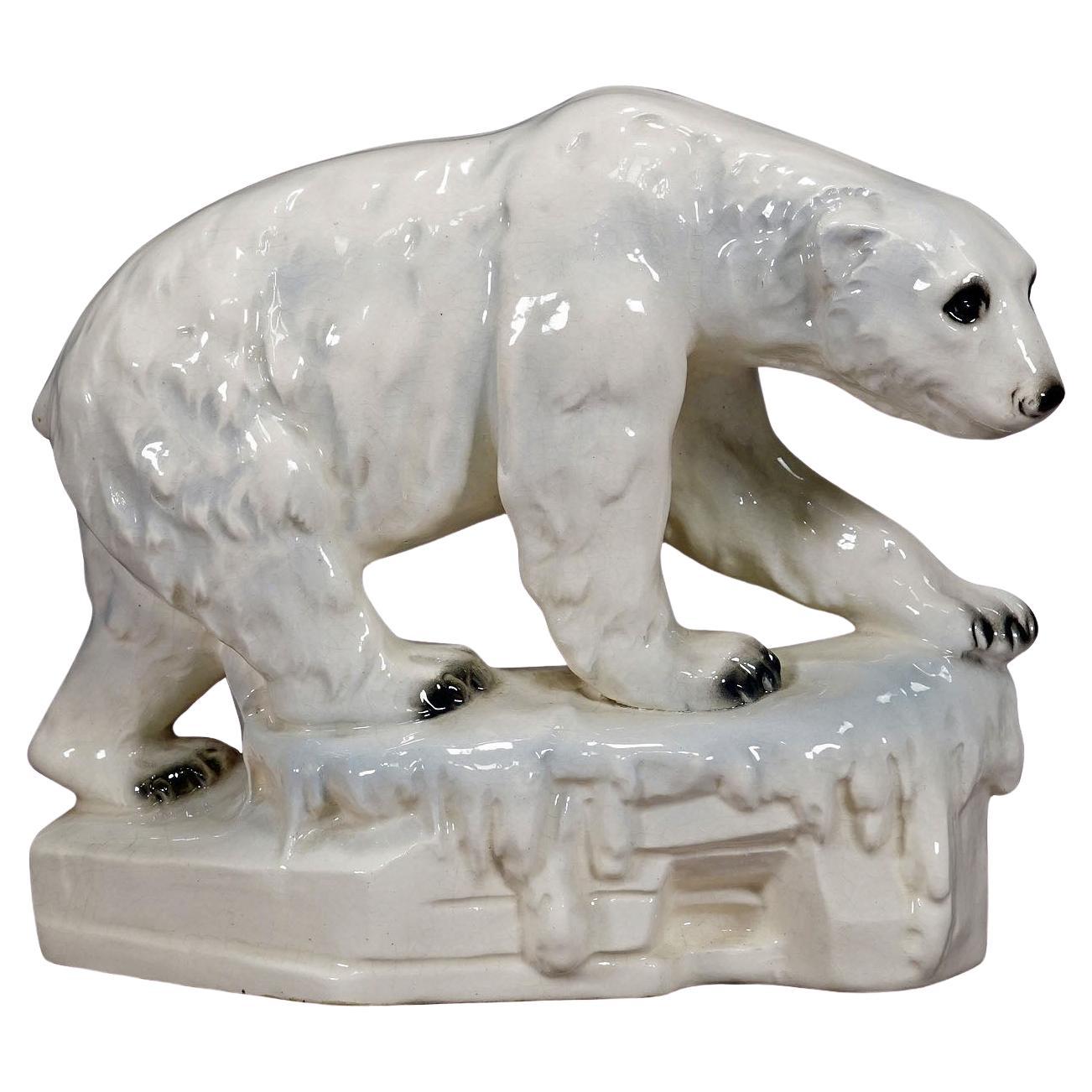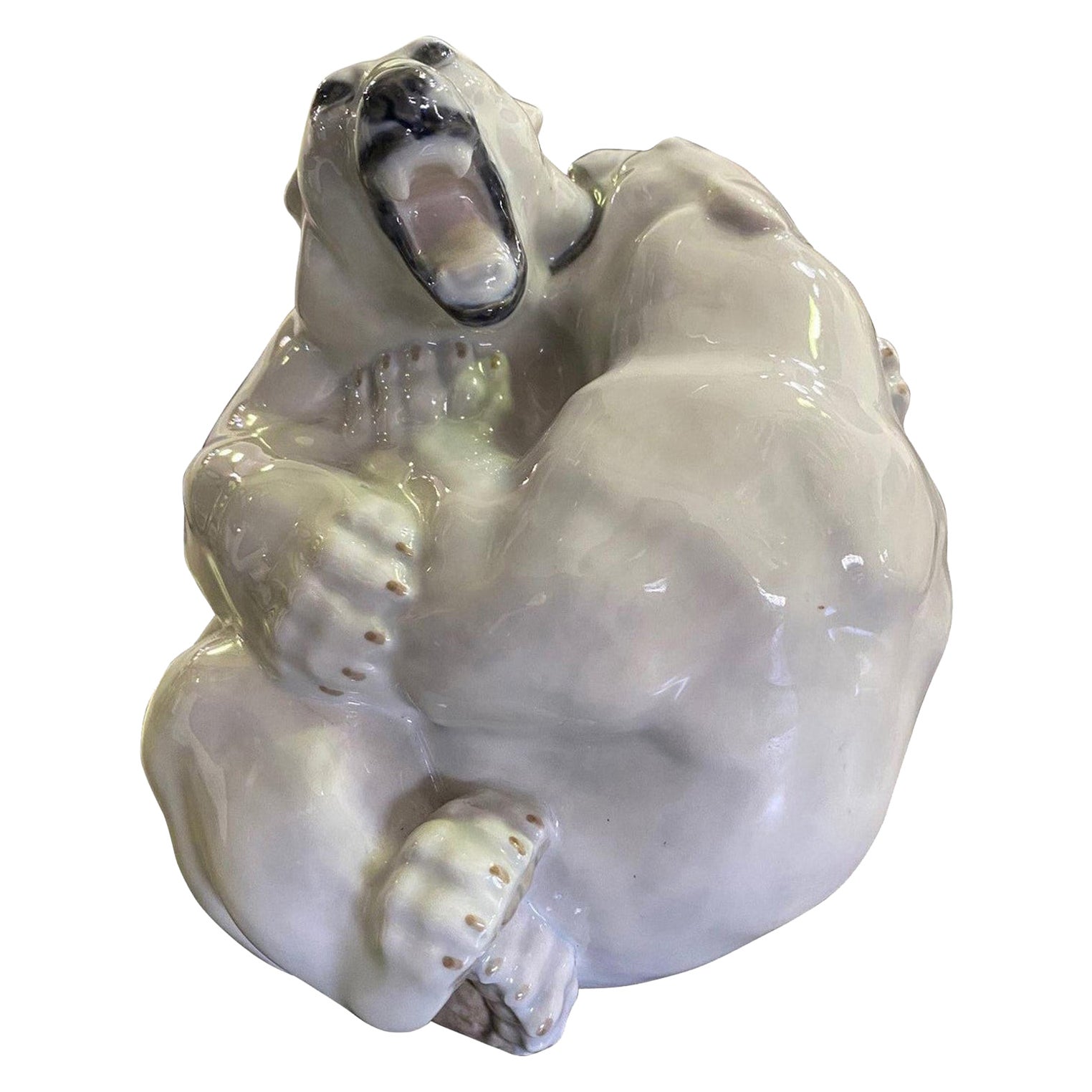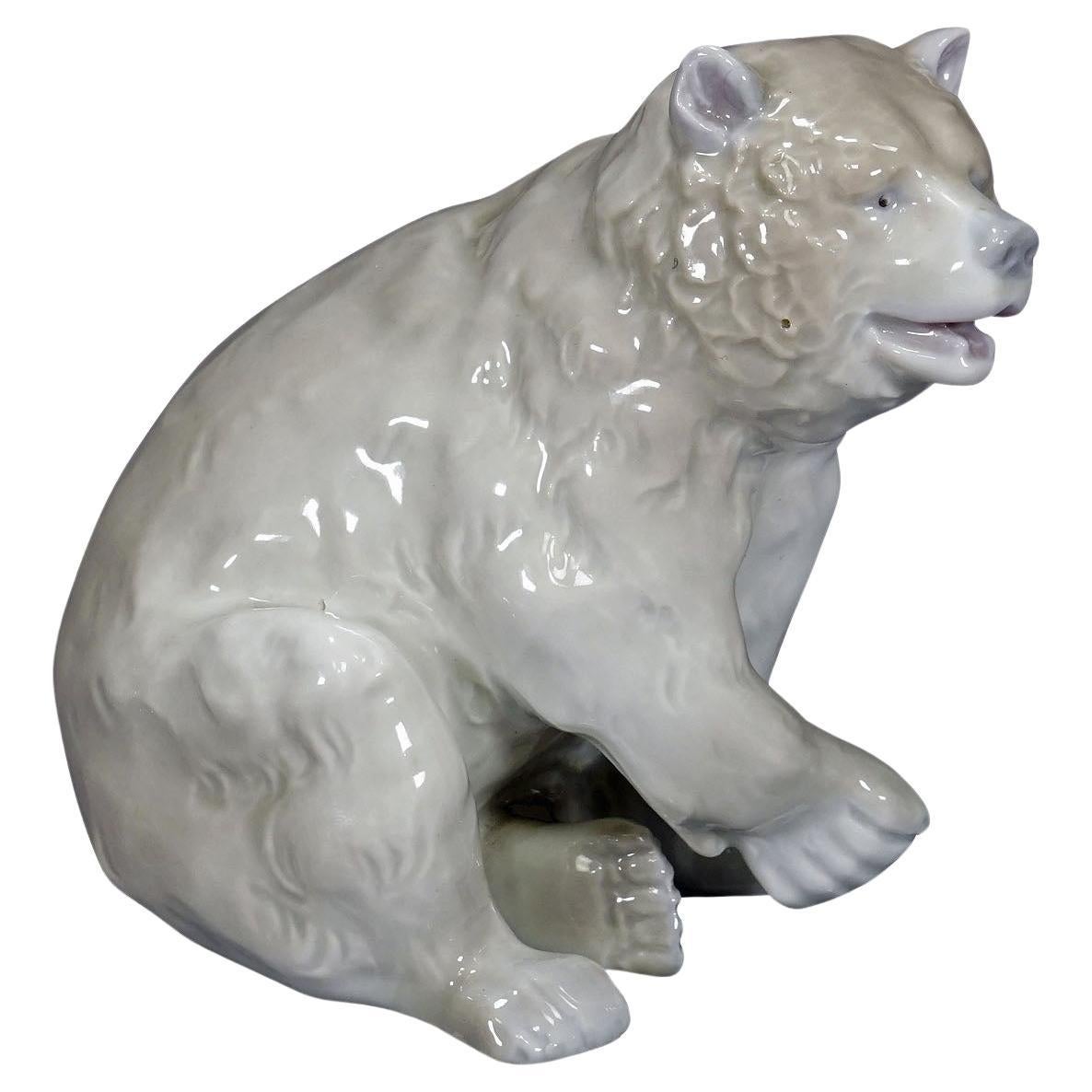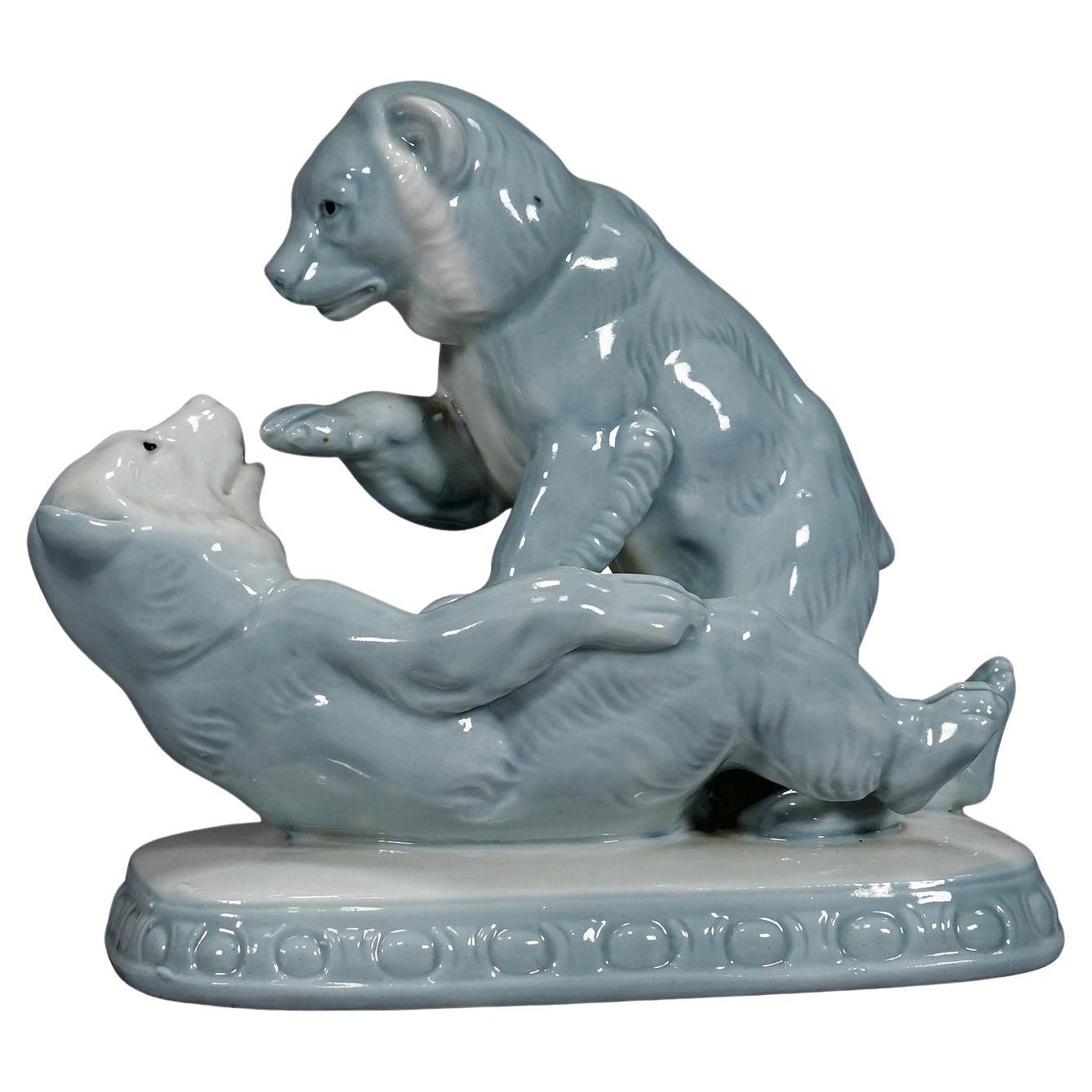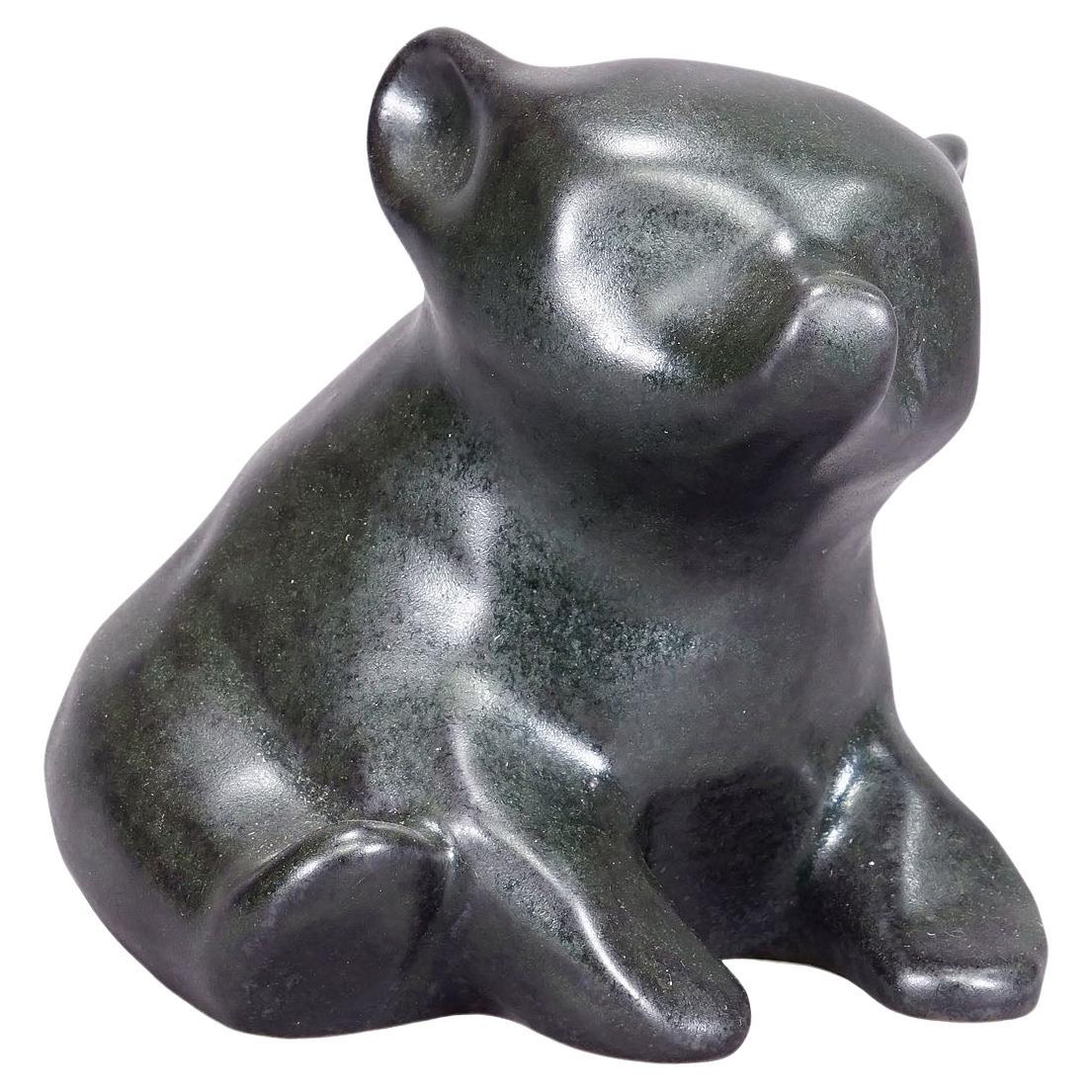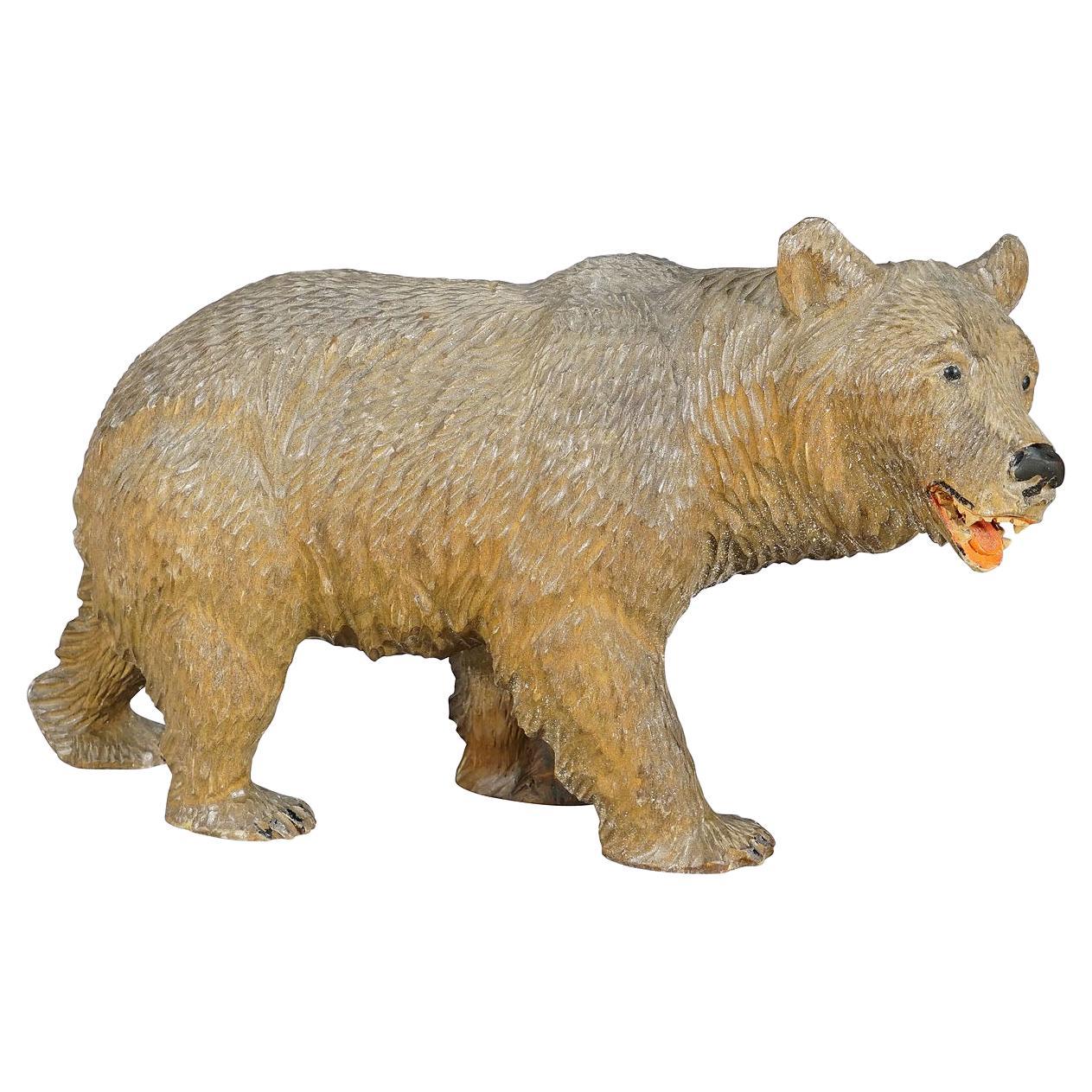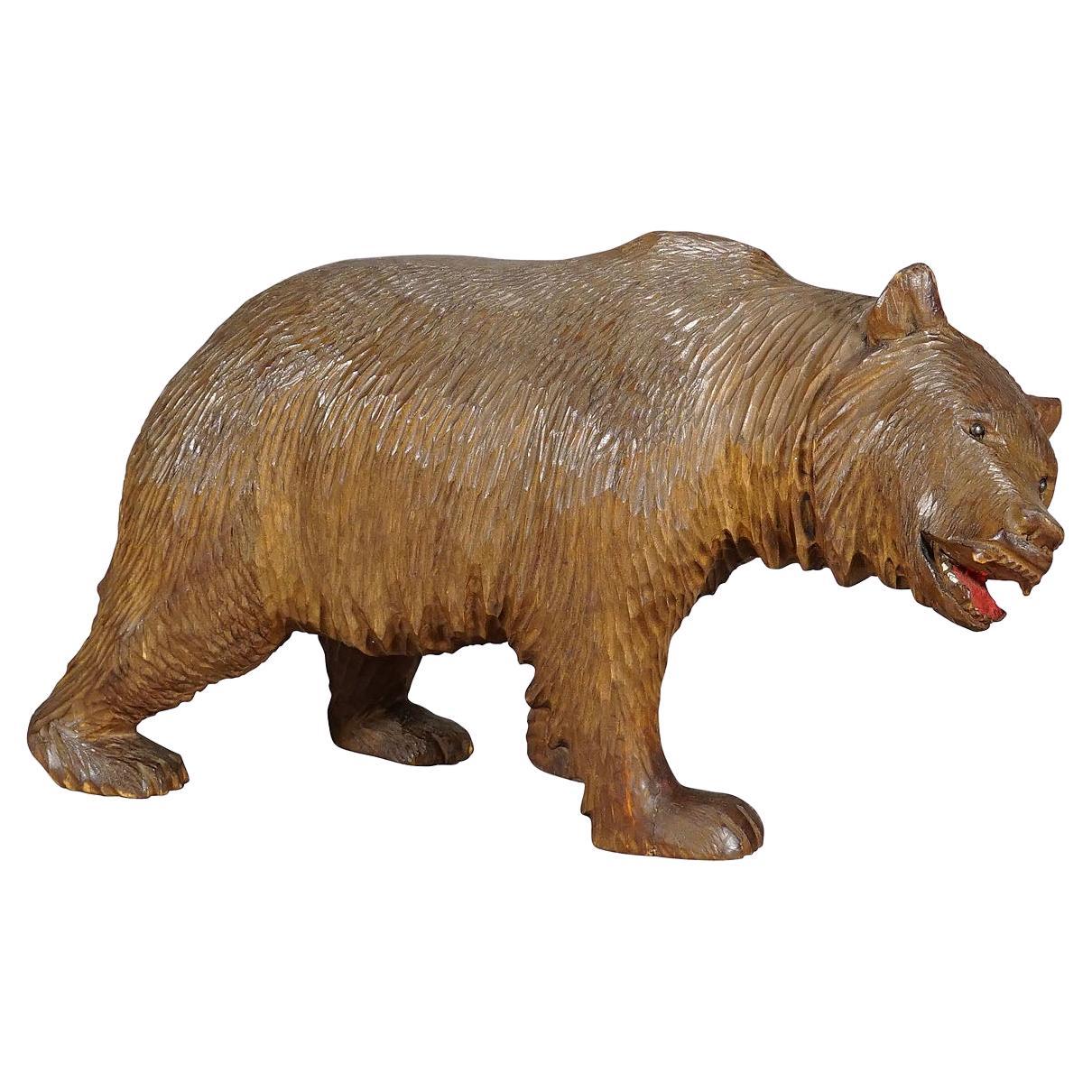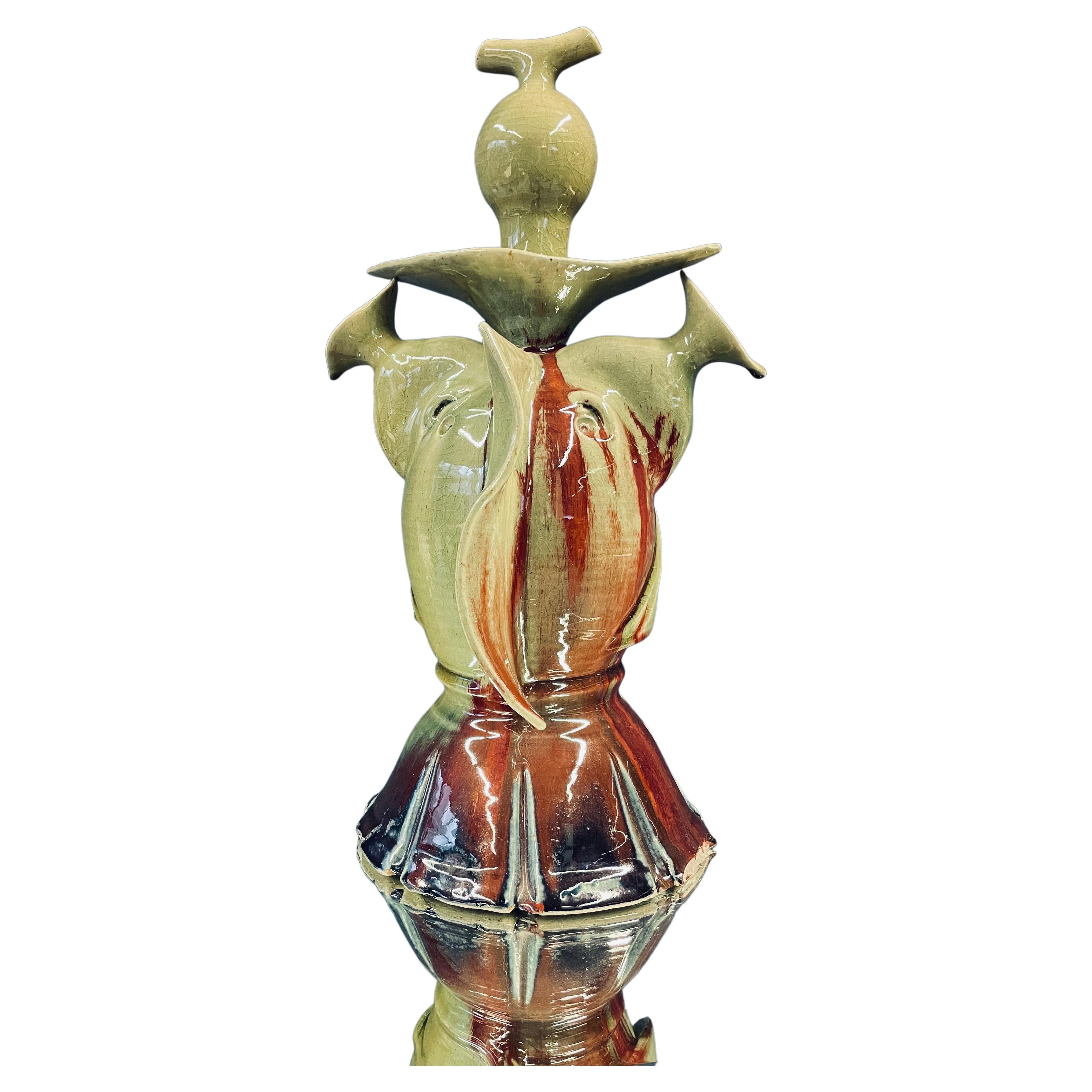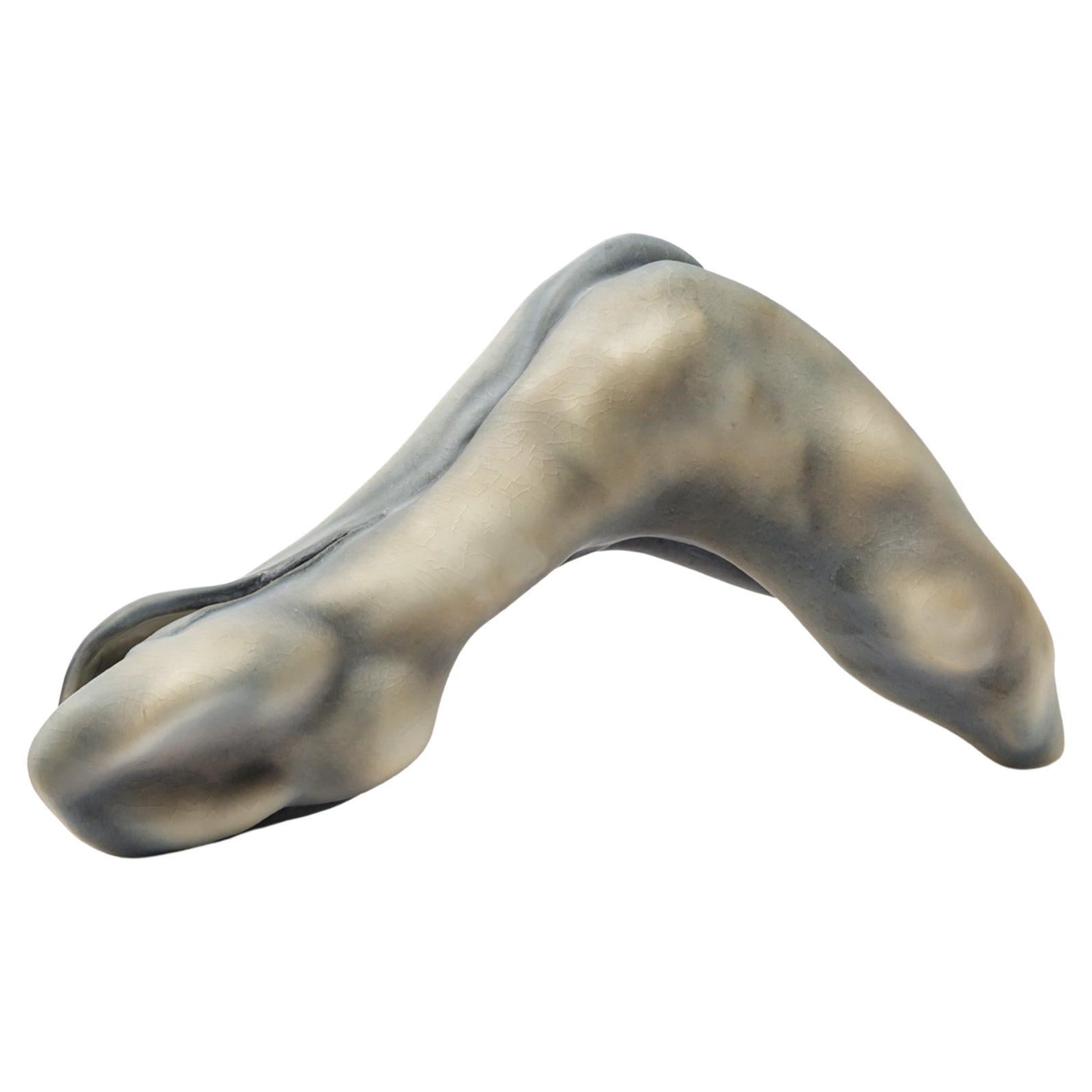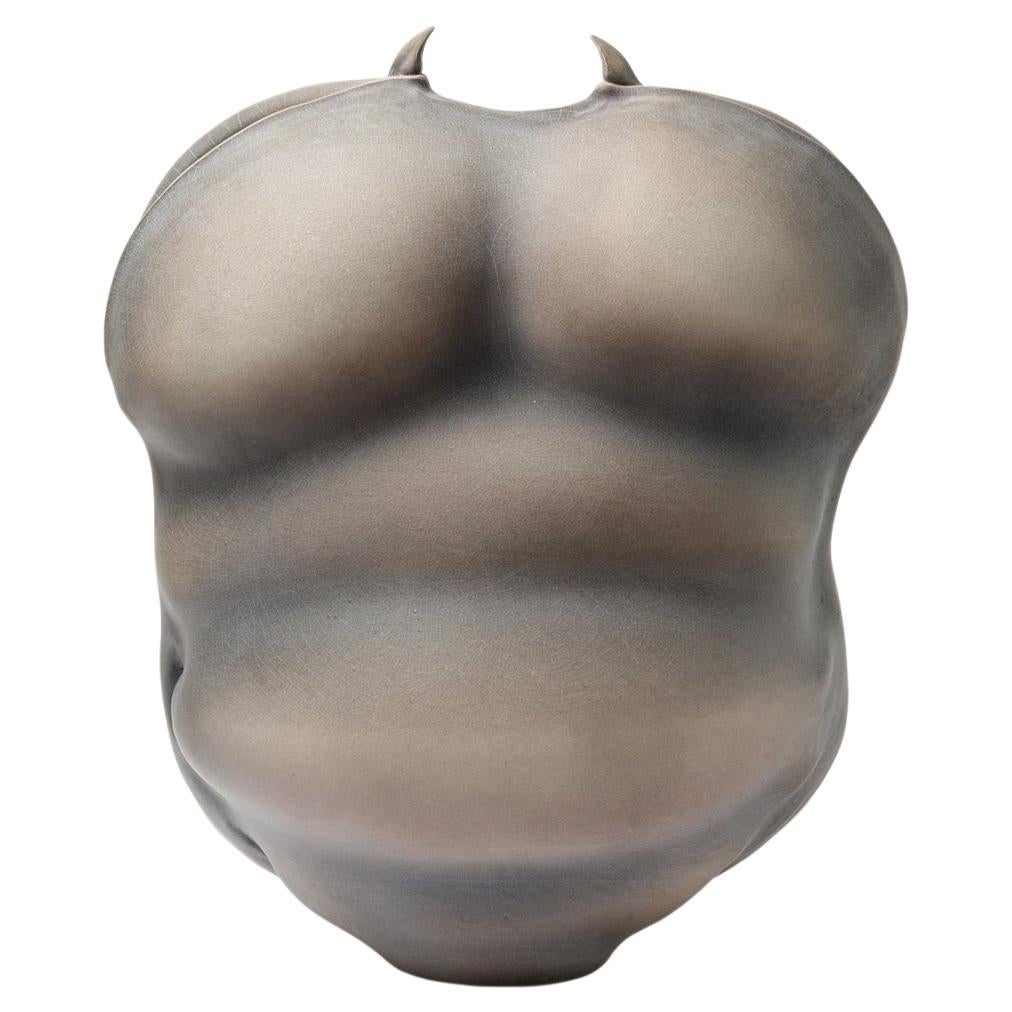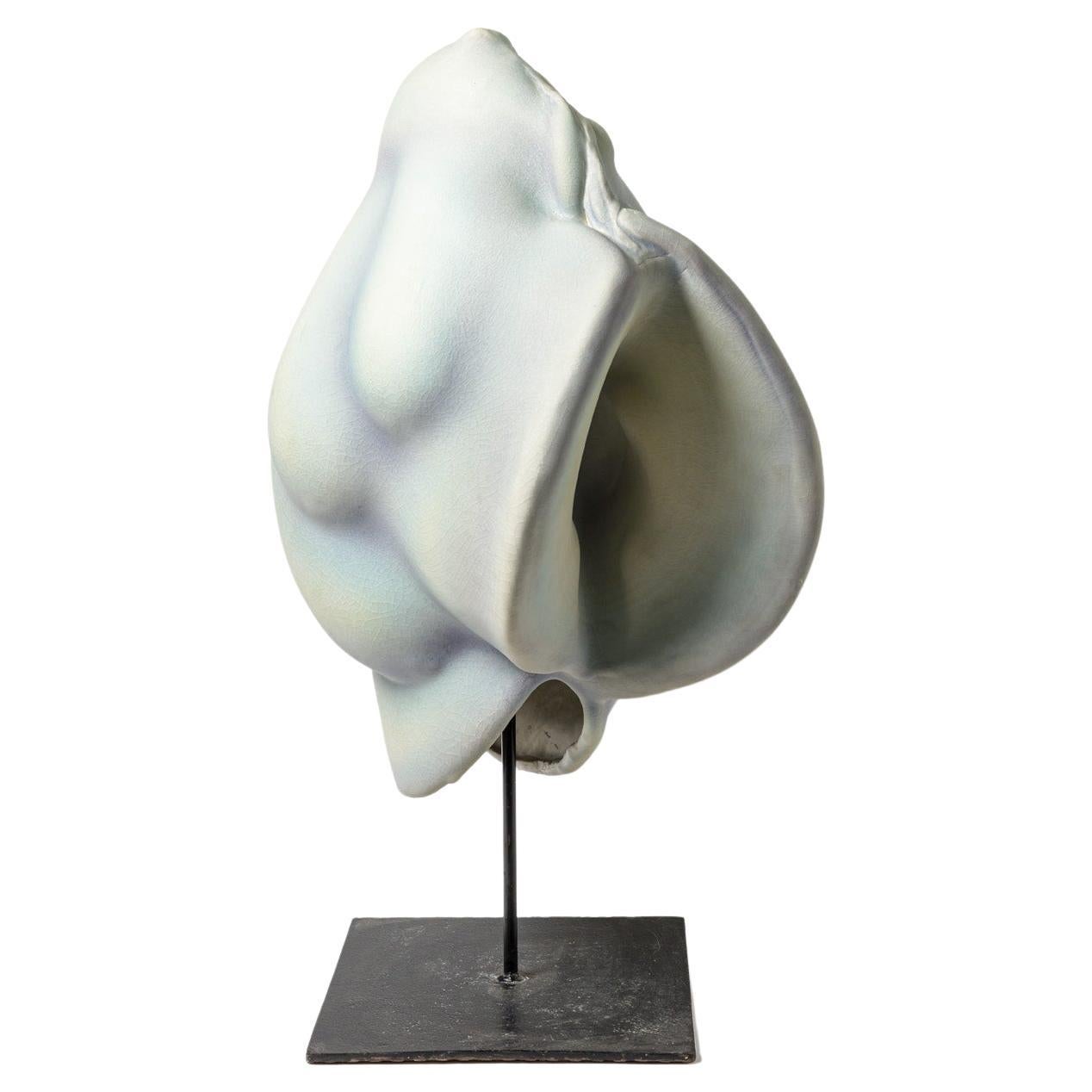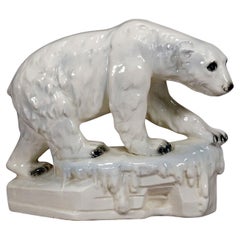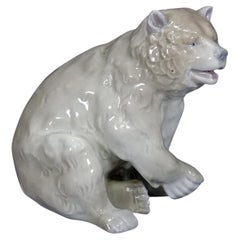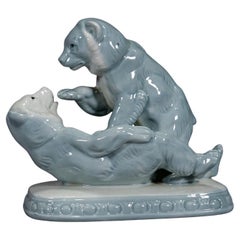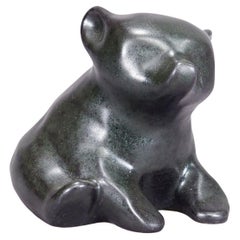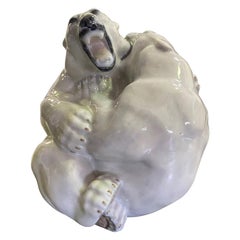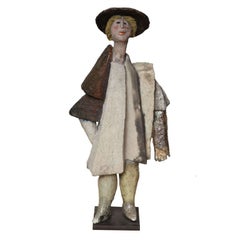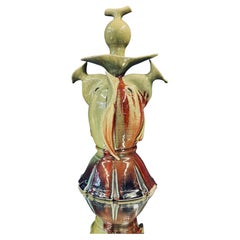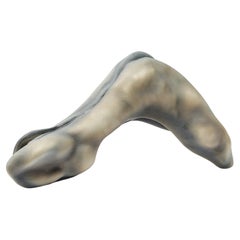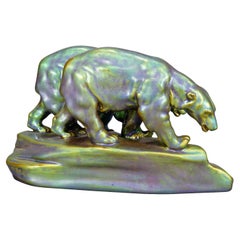
Antique Zsolnay Pecs Polar Bears Sculpture, ca. 1930s
View Similar Items
Want more images or videos?
Request additional images or videos from the seller
1 of 11
Antique Zsolnay Pecs Polar Bears Sculpture, ca. 1930s
About the Item
- Dimensions:Height: 4.73 in (12 cm)Width: 7.88 in (20 cm)Depth: 3.15 in (8 cm)
- Style:Mid-Century Modern (In the Style Of)
- Materials and Techniques:Porcelain,Cast
- Place of Origin:
- Period:
- Date of Manufacture:circa 1930s
- Condition:Wear consistent with age and use. All of our items are in very good condition. They have been utilised and therefore may show age-related traces of usage. If not mentioned in the item description they don't have defects. Feel free to contact us for a detailled condition report.
- Seller Location:Berghuelen, DE
- Reference Number:Seller: e72821stDibs: LU988739843842
About the Seller
5.0
Platinum Seller
Premium sellers with a 4.7+ rating and 24-hour response times
Established in 1989
1stDibs seller since 2013
623 sales on 1stDibs
Typical response time: 4 hours
Authenticity Guarantee
In the unlikely event there’s an issue with an item’s authenticity, contact us within 1 year for a full refund. DetailsMoney-Back Guarantee
If your item is not as described, is damaged in transit, or does not arrive, contact us within 7 days for a full refund. Details24-Hour Cancellation
You have a 24-hour grace period in which to reconsider your purchase, with no questions asked.Vetted Professional Sellers
Our world-class sellers must adhere to strict standards for service and quality, maintaining the integrity of our listings.Price-Match Guarantee
If you find that a seller listed the same item for a lower price elsewhere, we’ll match it.Trusted Global Delivery
Our best-in-class carrier network provides specialized shipping options worldwide, including custom delivery.More From This Seller
View AllAntique Faience Polar Bear Sculpture, ca. 1930s
Located in Berghuelen, DE
Antique Faience Polar Bear Sculpture, ca. 1930s
Item e7268
Antique faience statue depicting a polar bear, decorated with polish colors and shiny glacé....
Category
Mid-20th Century German Art Deco Figurative Sculptures
Materials
Faience
Vintage Porcelain Bear Statue, Germany, ca 1950s
Located in Berghuelen, DE
Vintage Porcelain Bear Statue, Germany, ca 1950s
Item e7269
An old porcelain bear statue, decorated with polychrome colors. Made in Germany ca. 1950s. Illegible maker's signature on ...
Category
Mid-20th Century German Victorian Figurative Sculptures
Materials
Porcelain
Vintage Porcelain Statue with Playing Bears, Germany, ca 1950s
Located in Berghuelen, DE
Vintage Porcelain Statue with Playing Bears, Germany, ca 1950s
Item e7267
An vintage porcelain statue depicting playing bears, decorated with polychrome colors. Made in Germany ca. 1...
Category
Mid-20th Century German Victorian Figurative Sculptures
Materials
Porcelain
Stylized Bear Sculpture by Richard Lindh for Arabia Finland
Located in Berghuelen, DE
Stylized Bear Sculpture by Richard Lindh for Arabia Finland
Item e7279
A vintage ceramic statue depicting a bear. Made by Arabia Finland and de...
Category
Mid-20th Century German Victorian Figurative Sculptures
Materials
Porcelain
Cast of a Strolling Bear Sterling Silver ca. 1930s
Located in Berghuelen, DE
Cast of a Strolling Bear Sterling Silver ca. 1930s
Item e7248
A lovely sculpture of a strolling bear casted in sterling silver, Germany 1st half of the 20th century. 108,7 gramm, 3.8...
Category
Early 20th Century German Victorian Sterling Silver
Materials
Silver
Cast of a Sitting Bear Sterling Silver ca. 1930s
Located in Berghuelen, DE
Cast of a Sitting Bear Sterling Silver ca. 1930s
Item e7245
A lovely sculpture of a sitting bear casted in sterling silver, Germany 1st half of the 20th century. 57,3 gramm, 2.02 oz....
Category
Early 20th Century German Victorian Sterling Silver
Materials
Silver
You May Also Like
Royal Copenhagen Danish Stamped Signed Porcelain Fighting Polar Bears Model 2317
By Royal Copenhagen
Located in Studio City, CA
A wonderfully designed and colored figurine of two playful fighting/wresting polar bears by Danish Royal Copenhagen.
Stamped, numbered (2317), and signed ("OP") on the base.
W...
Category
Mid-20th Century Danish Mid-Century Modern Ceramics
Materials
Porcelain
Roger Capron - Le Pelerin Sculpture
By Roger Capron
Located in Stratford, CT
Beautiful work from Roger and Jacotte Capron. What is remarkable in this couple is their symbiosis; Roger Capron designs and shapes the piece, Jacotte C...
Category
20th Century French Mid-Century Modern Sculptures
Materials
Ceramic
Large Ceramic Sculpture
Located in Munich, DE
Creative phantasy sculpture signed by the artist
Category
Mid-20th Century French Modern Abstract Sculptures
Materials
Ceramic
$3,071
Porcelain Sculpture by Wayne Fischer, 2022
By Wayne Fischer
Located in Saint-Ouen, FR
A porcelain sculpture by Wayne Fischer.
Perfect original conditions.
Signed.
Unique piece.
2022.
How can an inert object produce deeply unsuspecting, indecipherable, uncontrollable emotions?
Wayne Fischer is an artist who can create works that force one to ask such moving questions as this. If he doesn’t know why, if he can’t explain the deepest reasons of his artistic research, he definitely knows the workings and limitations of the artistic process he invented.
He has never deviated from the course he set for himself since university; translate life. The works presented here show the evolution of his creations over the past thirty years. If Wayne Fischer has received several international prizes and quickly obtained the recognition of his peers in ceramics, nevertheless he retains a singular position at once unavoidable and disturbing. His sculptures are paradoxical, powerful and sensual, and cause a certain unease. They are beautiful, carnal, touchable, all the while being outside the standard idea of beauty. The ambiguity of attraction and rejection is at the heart of this evolution.
The pieces from the 1980s and 90s are imposing by their size, stature and symmetry, which give them balance. They generate surprise, curiosity and play between contrasts that are both soft and aggressive. They reference the body, muscles, and torso, without presenting an exact reality. They are double-faced, seductive, and enigmatic. Wayne’s shapes are inspired by shells, bivalves, sometimes presented as though they are floating in space. But the reference of the marine world to the mysterious female body has only one interpretation and only history and emotion condition the reaction of the spectator: he accepts or refuses to see, to be seduced. He is touched or he flees.
The more recent sculptures are appreciated in the fullness of their round volume and the search for a pure universal beauty. “Metamorphosis,” the work recently awarded by the Bettencourt Foundation, is from this series of pieces wheel- thrown and deformed which pushes the porcelain from the inside so the bulges evoke the movement of waves or the musculature of several bodies. The exactness, the clean breaks, the assurance of lines and valleys are testimony to the interior power that governs the creation. The life energy expressed is also felt by the artist as the origin of ceramics. All the pieces are curved and tense. They show no marking, no sign of the hand, no imprints, and yet give an impression of spontaneity, as if a dropped piece of clay found its form by chance. Depending on the angles, the content becomes “the origins of the world...
Category
21st Century and Contemporary French Beaux Arts Abstract Sculptures
Materials
Ceramic
Porcelain Sculpture by Wayne Fischer, 2006
By Wayne Fischer
Located in Saint-Ouen, FR
A porcelain sculpture by Wayne Fischer.
Perfect original conditions.
Signed.
Unique piece.
2006.
How can an inert object produce deeply unsuspecting, indecipherable, uncontrollable emotions?
Wayne Fischer is an artist who can create works that force one to ask such moving questions as this. If he doesn’t know why, if he can’t explain the deepest reasons of his artistic research, he definitely knows the workings and limitations of the artistic process he invented.
He has never deviated from the course he set for himself since university; translate life. The works presented here show the evolution of his creations over the past thirty years. If Wayne Fischer has received several international prizes and quickly obtained the recognition of his peers in ceramics, nevertheless he retains a singular position at once unavoidable and disturbing. His sculptures are paradoxical, powerful and sensual, and cause a certain unease. They are beautiful, carnal, touchable, all the while being outside the standard idea of beauty. The ambiguity of attraction and rejection is at the heart of this evolution.
The pieces from the 1980s and 90s are imposing by their size, stature and symmetry, which give them balance. They generate surprise, curiosity and play between contrasts that are both soft and aggressive. They reference the body, muscles, and torso, without presenting an exact reality. They are double-faced, seductive, and enigmatic. Wayne’s shapes are inspired by shells, bivalves, sometimes presented as though they are floating in space. But the reference of the marine world to the mysterious female body has only one interpretation and only history and emotion condition the reaction of the spectator: he accepts or refuses to see, to be seduced. He is touched or he flees.
The more recent sculptures are appreciated in the fullness of their round volume and the search for a pure universal beauty. “Metamorphosis,” the work recently awarded by the Bettencourt Foundation, is from this series of pieces wheel- thrown and deformed which pushes the porcelain from the inside so the bulges evoke the movement of waves or the musculature of several bodies. The exactness, the clean breaks, the assurance of lines and valleys are testimony to the interior power that governs the creation. The life energy expressed is also felt by the artist as the origin of ceramics. All the pieces are curved and tense. They show no marking, no sign of the hand, no imprints, and yet give an impression of spontaneity, as if a dropped piece of clay found its form by chance. Depending on the angles, the content becomes “the origins of the world”. Femininity and sensuality are exalted. Inspired by the body, before and after birth, or simply the sea, the parts of the sculpture conjugate around a mysterious interior cavity, secret and troubling. The interior wall doesn’t correspond to the exterior, and has its own volumes, deformities, and intimacy. The pieces present two kinds of interior: one open, and partially uncovered, the other totally hidden inside. The differences of their respective deformation reinforce the impression of life : the subjective representation of muscles and bones, of bulges pushed by an interior force, like a visceral movement of respiration. The surface of the ceramic is crackled but soft and fine, even reflecting light like the skin. The nuances of color reinforce the expression of sensuality.
The alignment of technique and what it causes one to see and feel has rarely been so intimately successful.
Wayne Fischer perfected his technique in the 1970s and has remained faithful to it. He adds fibers to porcelain clay that has been chosen for its whiteness to create and accentuate volume around empty space, by assembling slabs or thrown pieces. Then, he makes another piece that takes its place inside; both parts are formed with no hand...
Category
21st Century and Contemporary French Beaux Arts Abstract Sculptures
Materials
Ceramic
A porcelain sculpture by Wayne Fischer, 1997
By Wayne Fischer
Located in Saint-Ouen, FR
A porcelain sculpture by Wayne Fischer.
Perfect original conditions.
Signed.
Unique piece.
1997.
How can an inert object produce deeply unsuspecting, indecipherable, uncontrollable emotions?
Wayne Fischer is an artist who can create works that force one to ask such moving questions as this. If he doesn’t know why, if he can’t explain the deepest reasons of his artistic research, he definitely knows the workings and limitations of the artistic process he invented.
He has never deviated from the course he set for himself since university; translate life. The works presented here show the evolution of his creations over the past thirty years. If Wayne Fischer has received several international prizes and quickly obtained the recognition of his peers in ceramics, nevertheless he retains a singular position at once unavoidable and disturbing. His sculptures are paradoxical, powerful and sensual, and cause a certain unease. They are beautiful, carnal, touchable, all the while being outside the standard idea of beauty. The ambiguity of attraction and rejection is at the heart of this evolution.
The pieces from the 1980s and 90s are imposing by their size, stature and symmetry, which give them balance. They generate surprise, curiosity and play between contrasts that are both soft and aggressive. They reference the body, muscles, and torso, without presenting an exact reality. They are double-faced, seductive, and enigmatic. Wayne’s shapes are inspired by shells, bivalves, sometimes presented as though they are floating in space. But the reference of the marine world to the mysterious female body has only one interpretation and only history and emotion condition the reaction of the spectator: he accepts or refuses to see, to be seduced. He is touched or he flees.
The more recent sculptures are appreciated in the fullness of their round volume and the search for a pure universal beauty. “Metamorphosis,” the work recently awarded by the Bettencourt Foundation, is from this series of pieces wheel- thrown and deformed which pushes the porcelain from the inside so the bulges evoke the movement of waves or the musculature of several bodies. The exactness, the clean breaks, the assurance of lines and valleys are testimony to the interior power that governs the creation. The life energy expressed is also felt by the artist as the origin of ceramics. All the pieces are curved and tense. They show no marking, no sign of the hand, no imprints, and yet give an impression of spontaneity, as if a dropped piece of clay found its form by chance. Depending on the angles, the content becomes “the origins of the world...
Category
21st Century and Contemporary French Beaux Arts Abstract Sculptures
Materials
Ceramic
Recently Viewed
View AllMore Ways To Browse
Zsolnay Figurine
18 Th Century Statues
1930 French Lamp With Asian Women
20 Greek Style Marble Sculpture
4 Seasons Glass Statuettes
Acupuncture Model
Adolphe-Jean Lavergne On Sale
Alabaster Buddha Heads
Alabaster Relief Plaque
Alan Clark
Albert Strunz
Alberternest Carrier Belleuse
Alexander Kelety
Alfred Barye On Sale
Alice Winant
Allach Porcelain
Amleto Cataldi
Amour Chair
